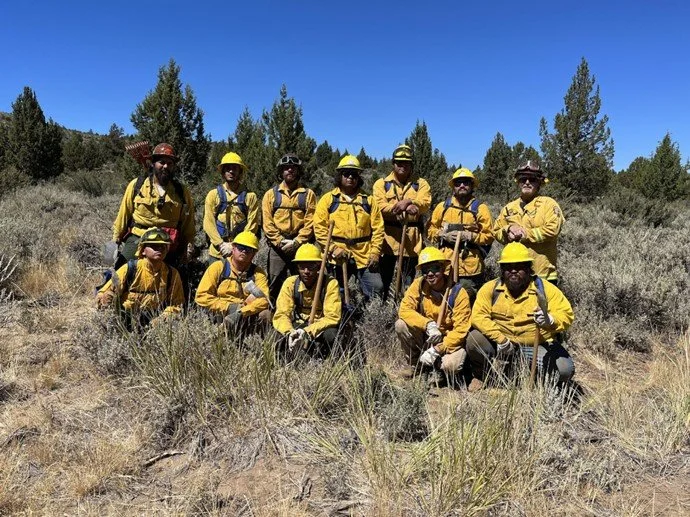Supported by $1 million in funding through the Low-Carbon Economy Workforce Program, the High Road to Tribal Forest Restoration and Stewardship (HRTP) project provides foundational training and skill building tied directly to work experience in forest health and landscape restoration. Through a partnership between Tribes, nonprofits, and regional employers, the project is working to increase employment opportunities and build capacity for Tribal Forest restoration crews. The project has formally engaged with fourteen Tribes, with training participants from over twenty Tribes.
Susanville Indian Rancheria Fire and Fuels Crew
A central principle of the partnership is to support and develop Tribal capacity along with individual skills. Tribes are the leaders in the process of developing long term training and employment plans, leading to successful stewardship of homelands and implementation of forest health projects. In 2022, the HRTP hosted a two-day leadership intensive with 38 tribal restoration crew leaders and administrative leaders from across the state, exemplifying the commitment of Tribal partners to developing robust restoration crews and providing employment opportunities for their members, while restoring forest and watershed health.
In reflecting on the partnership, Dakota Baez, Forestry Crew Supervisor said, "I appreciate the training, equipment, and support that Sierra Institute has been able to provide Susanville Indian Rancheria's Forestry Crew through Highroads. This training has helped reinstate SIR's [Susanville Indian Rancheria] Forestry Program and will be carried throughout our careers."
In 2022 alone, the program served 257 individuals from California Tribes. Training participants receive certificates for valuable industry skills such as wildland firefighting, saw training, hazard tree removal, traditional ecological knowledge, and more. To tailor training directly to community and Tribal needs, the program includes an assessment of the level of training of existing crews, followed by a training plan geared toward current work available so that training leads directly to employment. The program includes paid trainings and work experience and brings trainings into communities. The partnership works to remove barriers to entry into the workforce such as long travel times in rural regions and requirements of formal education programs by providing trainings in the communities and on the landscapes where work will be completed.


